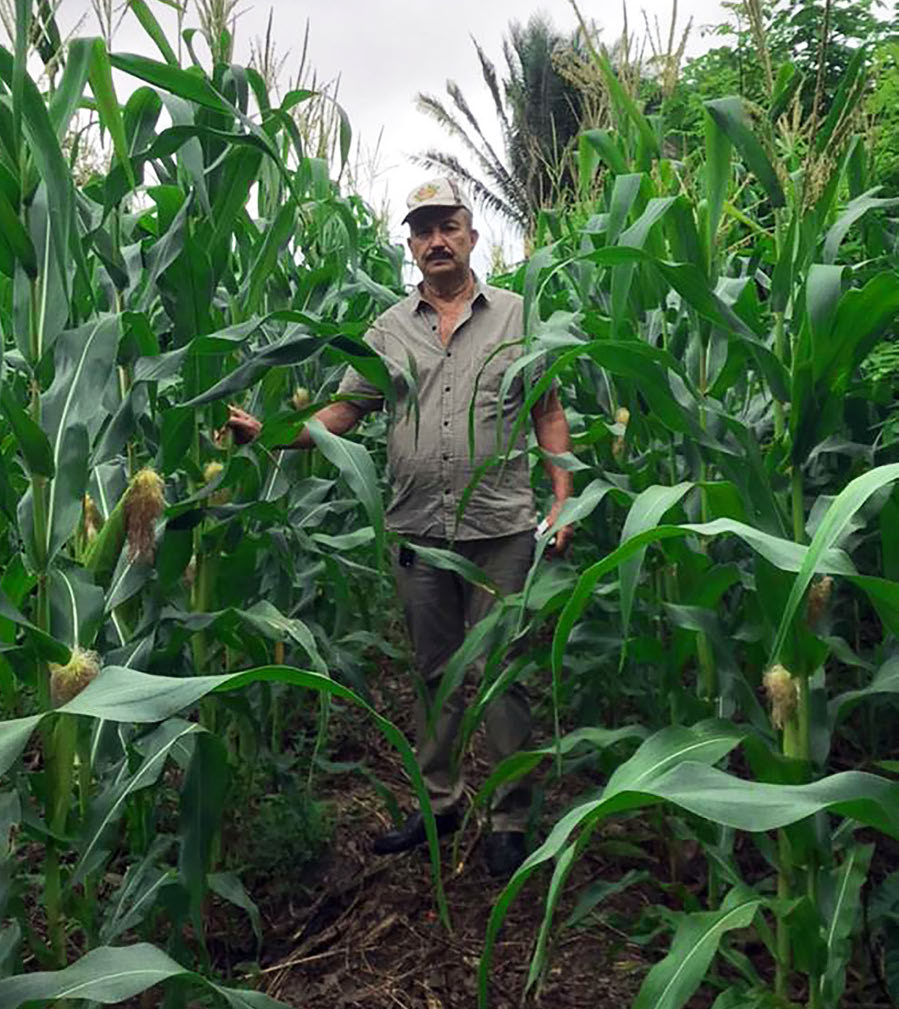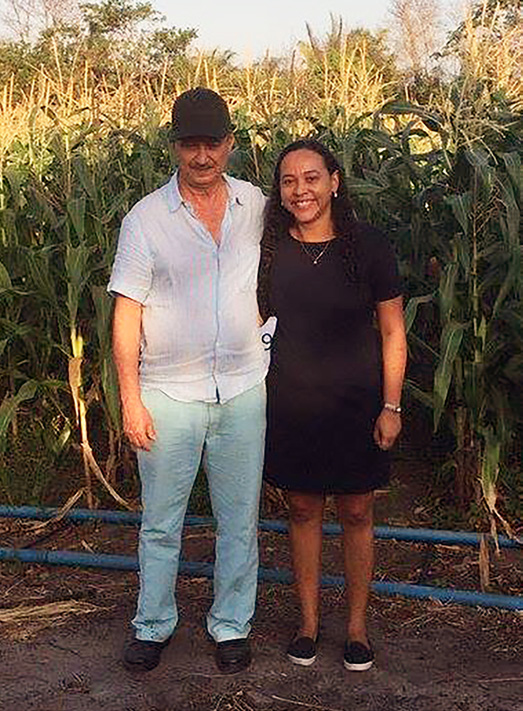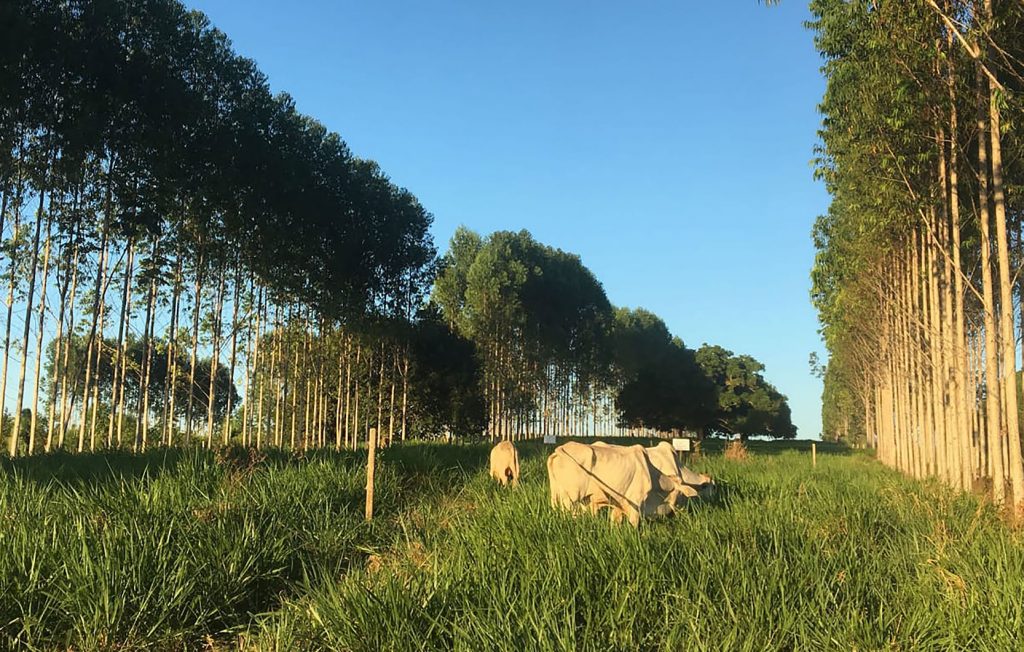CEPHaS 5
Conservation Agriculture Perspectives


Professor Emanoel Gomes de Moura is professor in the Agroecology Post- Graduate programme at Maranhão State University in Brazil. He is a specialist in tropical agriculture with particular interest in low-fertility soils and the stabilization of soil organic carbon. Alana das Chagas Ferreira Aguiar is also a professor at Maranhão State University where she works on ecological intensification and nutrient cycling, working with family farmers. They have both been collaborating with Professor Sacha Mooney (University of Nottingham, and CEPHaS project) to examine and demonstrate the benefits for soil quality and crop production of systems which combine grazing livestock, trees and crops as an adaptation to climate change. Here they tell us more about the systems they are studying, an interesting contrast with the conservation agriculture methods which CEPHaS is examining in Africa, but with some common features.
1. What are the main ways in which you have seen farmers adapting to climate change in Brazil in recent years?
- The principal strategy used by large-scale farmers to adapt to climate change in Brazil is the integrated agri-silvo-pastoral system also named low- carbon agriculture. This system comprises planting eucalyptus rows at wide spacings between crop strips intercropped with grass. This increases organic inputs to the soil, building the soil carbon stock and with it soil fertility and structural stability.
- At the family farm scale, we have recommended an integrated-alley-crop- livestock-system. This system takes advantage of fast-growing leguminous tropical trees which produce high quality biomass which is used to increase and maintain soil organic matter in soil. Zero till is almost always used, although farmers sometimes abandon it because of problems with weed control. Maize — Soybean rotations are used, mainly to reduce root diseases.
2. In what sets of circumstances (biophysical, socio-economic etc) are conservation agriculture practices most likely to be beneficial to rural communities, and in what circumstances are they least likely to be useful?
Conservation agriculture practices are most likely to be beneficial to rural communities when family farmers have at their disposal, technologies, and systems to replace unsustainable models like shifting cultivation systems where land is brought into cultivation, and then abandoned to fallow after a few years. Establishing alternative and sustainable agricultural system
is heavily dependent on support of public decision makers and local government. Conservation agriculture practices fail in rural communities when they are not adequately supported through education and local technicians/agronomists.
3. What components of conservation agriculture systems are most problematic from the perspective of farmers?
We have found that many smallholder farmers in the Amazonian periphery view the greater complexity of the systems from conservation agriculture, like integrated-crop-livestock-systems, as a significant barrier to adoption. This highlights the need to improve how technicians and researchers engage with farmers. The substitution of simple low-cost systems like slash and burn with more complex and expensive ones such as no-tillage in alley cropping cannot succeed without efficient support by public agencies to overcome principal bottlenecks. Training in soil-crop management practices and increased understanding of the functioning of systems and their components, fertilizers, and soil amendments are needed urgently.
In addition to improving the dissemination of technology, efficient strategies to add value to the harvested product and to reduce the impact of costs of inputs on farmers’ evaluation of the system are needed.
4. What do you think should be priority research topics if agriculture in Brazil is to adapt to climate change and contribute to mitigation?
In tropical regions, climatic factors promote the loss of soil organic matter through fast decomposition, and the loss of fertility through leaching of nutrients. Unless this is countered by soil management, land degradation (and consequently shifting
cultivation) will occur. The continuous management of soil in the humid tropics requires soil organic matter accumulation and stabilization, increased retention of base cations in the root zone, and improvements to the soil structure. This requires approaches which do more than promote crop productivity in any one season, but which increase the stabilization of soil organic matter, and improve the cycling of nutrients to maintain fertility. The alley cropping system using leguminous trees that we have been using is one such option, but we need future research to consider others.

To find out more, visit our webpages at www2.bgs.ac.uk/CEPHaS and follow us on twitter @CEPHaS_Soil

